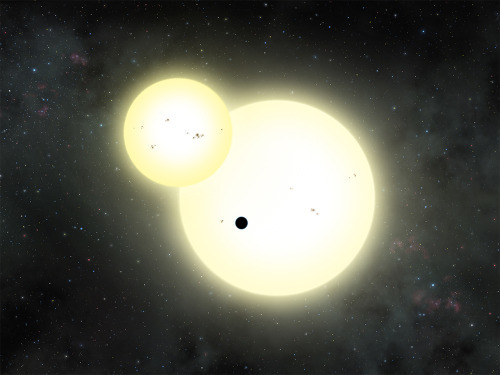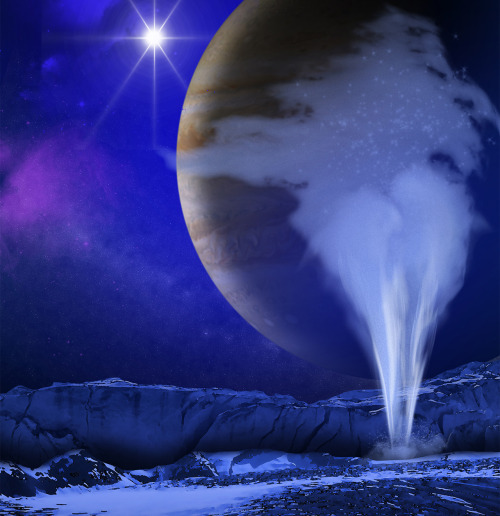It’s Cheaper In The Long Run

It’s cheaper in the long run
More Posts from Fionaahutton and Others









Apollo 11′s Landing was 47 Years Ago Today
“The eight day excursion was the beginning of humanity’s journey beyond our home world. Although we have yet to go farther under our own power than we did in the heyday of the Apollo program, our technology, science, dreams and ambition have only continued to grow. If we put the resources into it, human exploration of Mars, of Jovian and Saturnian satellites, or even of worlds beyond our Solar System might become a reality by the end of the 21st century. On the anniversary of the Apollo landings, it’s up to us to remember: it’s our Universe, too, and it’s up to us to make sure we extend our reach beyond the planet we were born onto.”
Less than a decade after the first human was launched into space, astronauts Neil Armstrong, Buzz Aldrin and Michael Collins journeyed from the Earth to the Moon. For the first time, human beings descended down to the lunar surface, opened the hatch, and walked outside. Humanity had departed Earth and set foot onto another world. While Armstrong and Aldrin walked on the surface, collecting now-iconic photos, deploying science instruments and returning hundreds of pounds of lunar samples, Michael Collins orbited overhead, embarking on a missing that no human being had undertaken before. Forty-seven years later, humanity has never had a bigger breakthrough as far as crewed space exploration goes.
Beautiful 🏵️💐🌹🥀



Ageing: Contentment over vanity. (at Sydney, Australia)
John at age 50
Oh oh

💊🚬
It’s May the 4th: Are Star Wars Planets Real?
Look at what we’ve found so far.
Is your favorite Star Wars planet a desert world or an ice planet or a jungle moon?
It’s possible that your favorite planet exists right here in our galaxy. Astronomers have found over 3,400 planets around other stars, called “exoplanets.”
Some of these alien worlds could be very similar to arid Tatooine, watery Scarif and even frozen Hoth, according to NASA scientists.
Find out if your planet exists in a galaxy far, far away or all around you. And May the Fourth be with you!
Planets With Two Suns

From Luke Skywalker’s home world Tatooine, you can stand in the orange glow of a double sunset. The same could said for Kepler-16b, a cold gas giant roughly the size of Saturn, that orbits two stars. Kepler-16b was the Kepler telescopes’s first discovery of a planet in a “circumbinary” orbit (that is, circling both stars, as opposed to just one, in a double star system).

The best part is that Tatooine aka Kepler-16b was just the first. It has family. A LOT of family. Half the stars in our galaxy are pairs, rather than single stars like our sun. If every star has at least one planet, that’s billions of worlds with two suns. Billions! Maybe waiting for life to be found on them.
Desert Worlds

Mars is a cold desert planet in our solar system, and we have plenty of examples of scorching hot planets in our galaxy (like Kepler-10b), which orbits its star in less than a day)! Scientists think that if there are other habitable planets in the galaxy, they’re more likely to be desert planets than ocean worlds. That’s because ocean worlds freeze when they’re too far from their star, or boil off their water if they’re too close, potentially making them unlivable. Perhaps, it’s not so weird that both Luke Skywalker and Rey grew up on planets that look a lot alike.
Ice Planets

An icy super-Earth named OGLE-200-BLG-390Lb reminded scientists so much of the frozen Rebel base they nicknamed it “Hoth,” after its frozen temperature of minus 364 degrees Fahrenheit. Another Hoth-like planet was discovered last month; an Earth-mass icy world orbiting its star at the same distance as Earth orbits the sun. But its star is so faint, the surface of OGLE-2016-BLG-1195Lb is probably colder than Pluto.

Forest worlds

Both the forest moon of Endor and Takodana, the home of Han Solo’s favorite cantina in “Force Awakens,” are green like our home planet. But astrobiologists think that plant life on other worlds could be red, black, or even rainbow-colored!
In February 2017, the Spitzer Space Telescope discovered seven Earth-sized planets in the same system, orbiting the tiny red star TRAPPIST-1.

The light from a red star, also known as an M dwarf, is dim and mostly in the infrared spectrum (as opposed to the visible spectrum we see with our sun). And that could mean plants with wildly different colors than what we’re used to seeing on Earth. Or, it could mean animals that see in the near-infrared.
What About Moons?
In Star Wars, Endor, the planet with the cute Ewoks, is actually a habitable moon of a gas giant. Now, we’re looking for life on the moons of our own gas giants. Saturn’s moon Enceladus or Jupiter’s moon Europa are ocean worlds that may well support life. Our Cassini spacecraft has explored the Saturn system and its moons. Watch the video and learn more about the missions’s findings.
And Beyond

The next few years will see the launch of a new generation of spacecraft to search for planets around other stars. TESS and the James Webb Telescope are slated to launch in 2018, and WFIRST in the mid-2020s. That’s one step closer to finding life.

You might want to take our ‘Star Wars: Fact or Fiction?’ quiz. Try it! Based on your score you may obtain the title of Padawan, Jedi Knight, or even Jedi Master!
You don’t need to visit a galaxy far, far away to find wondrous worlds. Just visit this one … there’s plenty to see.
Discover more about exoplanets here: https://exoplanets.nasa.gov/
Make sure to follow us on Tumblr for your regular dose of space: http://nasa.tumblr.com


John's name is going to Mars
😅
-
 tubatime8675 liked this · 11 months ago
tubatime8675 liked this · 11 months ago -
 im-just-a-marshmallow-i-swear liked this · 1 year ago
im-just-a-marshmallow-i-swear liked this · 1 year ago -
 saintwhisky liked this · 1 year ago
saintwhisky liked this · 1 year ago -
 snakierdart360 liked this · 1 year ago
snakierdart360 liked this · 1 year ago -
 dataanalyzer liked this · 1 year ago
dataanalyzer liked this · 1 year ago -
 artistic-octopus liked this · 1 year ago
artistic-octopus liked this · 1 year ago -
 cherryblossom-graveyard liked this · 1 year ago
cherryblossom-graveyard liked this · 1 year ago -
 fappertwo liked this · 1 year ago
fappertwo liked this · 1 year ago -
 hawkheartedlion reblogged this · 1 year ago
hawkheartedlion reblogged this · 1 year ago -
 forskyler reblogged this · 1 year ago
forskyler reblogged this · 1 year ago -
 xspiderfanx reblogged this · 1 year ago
xspiderfanx reblogged this · 1 year ago -
 xspiderfanx liked this · 1 year ago
xspiderfanx liked this · 1 year ago -
 tery-troker liked this · 1 year ago
tery-troker liked this · 1 year ago -
 theocean75 liked this · 1 year ago
theocean75 liked this · 1 year ago -
 doggirl2188 liked this · 1 year ago
doggirl2188 liked this · 1 year ago -
 ileavemyhaton liked this · 1 year ago
ileavemyhaton liked this · 1 year ago -
 lo-ll-a reblogged this · 1 year ago
lo-ll-a reblogged this · 1 year ago -
 kenwulf1552 liked this · 1 year ago
kenwulf1552 liked this · 1 year ago -
 ashawafondue reblogged this · 1 year ago
ashawafondue reblogged this · 1 year ago -
 curly33 reblogged this · 1 year ago
curly33 reblogged this · 1 year ago -
 sykomonkey liked this · 1 year ago
sykomonkey liked this · 1 year ago -
 holycrapitis liked this · 1 year ago
holycrapitis liked this · 1 year ago -
 iamwalrus01 liked this · 1 year ago
iamwalrus01 liked this · 1 year ago -
 farmingchicken reblogged this · 1 year ago
farmingchicken reblogged this · 1 year ago -
 nightowlpatrol liked this · 1 year ago
nightowlpatrol liked this · 1 year ago -
 comountainman1194 reblogged this · 1 year ago
comountainman1194 reblogged this · 1 year ago -
 curious-spectator liked this · 1 year ago
curious-spectator liked this · 1 year ago -
 cowboyride reblogged this · 1 year ago
cowboyride reblogged this · 1 year ago -
 cowboyride liked this · 1 year ago
cowboyride liked this · 1 year ago -
 blue-crescent reblogged this · 1 year ago
blue-crescent reblogged this · 1 year ago -
 arsenic-alex liked this · 1 year ago
arsenic-alex liked this · 1 year ago -
 citizend1ld0 liked this · 1 year ago
citizend1ld0 liked this · 1 year ago -
 dsaffo1 liked this · 1 year ago
dsaffo1 liked this · 1 year ago -
 aboyd43 liked this · 1 year ago
aboyd43 liked this · 1 year ago -
 theoddparallax liked this · 1 year ago
theoddparallax liked this · 1 year ago -
 badpenny77 reblogged this · 1 year ago
badpenny77 reblogged this · 1 year ago -
 badpenny77 liked this · 1 year ago
badpenny77 liked this · 1 year ago -
 gadsdenbetsyjoinbedford liked this · 1 year ago
gadsdenbetsyjoinbedford liked this · 1 year ago -
 snuggledupblanketdragon liked this · 1 year ago
snuggledupblanketdragon liked this · 1 year ago -
 rainbowsixreader liked this · 1 year ago
rainbowsixreader liked this · 1 year ago -
 kyledebotness liked this · 1 year ago
kyledebotness liked this · 1 year ago -
 skovellphoto liked this · 1 year ago
skovellphoto liked this · 1 year ago -
 its-ame-a-mario liked this · 1 year ago
its-ame-a-mario liked this · 1 year ago

